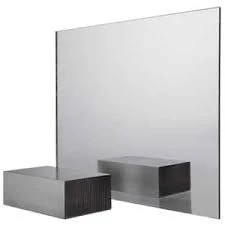

The Evolution and Significance of Tin Float Glass
In the world of glass manufacturing, few advancements have had as profound an impact as the invention of tin float glass. This innovative technique revolutionized the production of flat glass, providing a smooth, flawless surface that has since become the standard in various fields including architecture, automotive, and furniture design.
History of Tin Float Glass
The tin float glass process was developed in the mid-20th century, with significant contributions from the glass industry in Europe
. Before this invention, traditional methods of glass making, such as the cylinder or plate glass methods, often left imperfections and irregularities in the surface. These flaws were not only aesthetically displeasing but also impacted the optical clarity of the glass.The float glass process, patented in 1959 by Sir Alastair Pilkington, involved pouring molten glass onto a bed of molten tin. The glass, being less dense than tin, would float on its surface, spreading out and forming a uniform thickness while the tin provided a perfectly smooth and flat base. This method not only improved the quality of the glass but also increased production efficiency, allowing manufacturers to produce larger sheets of glass at a lower cost.
Characteristics of Tin Float Glass
Tin float glass is known for its outstanding clarity and smoothness. The process results in a consistent thickness, typically ranging from 2mm to 19mm, which is crucial for various applications. The glass is also highly resistant to distortions, ensuring that whatever lies behind it can be viewed with precision. The optical quality of float glass has made it the first choice for windows in skyscrapers, homes, and vehicles.
Furthermore, float glass can be treated to enhance its properties. For example, it can be laminated for safety, coated for energy efficiency, or chemically treated for durability. These enhancements allow for a versatile range of applications. Laminated float glass is commonly used in automobile windshields and skylights, while coated variants are preferred for energy-efficient buildings.
Environmental Considerations

As the global focus shifts towards sustainable practices, the glass manufacturing industry has began employing more environmentally friendly methods of production. The tin float glass process is inherently efficient, as it generates less waste compared to traditional methods. Additionally, advancements in recycling processes for glass have allowed for the reintroduction of cullet (recycled glass) into production, further reducing the carbon footprint of glass manufacturing.
Manufacturers are increasingly looking to reduce energy consumption in the melting and forming processes, utilizing advanced technologies that minimize emissions and maximize efficiency. Innovations in solar control and low-emissivity coatings are paving the way for more sustainable glass solutions that align with the principles of green building.
Applications of Tin Float Glass
Tin float glass is ubiquitous in contemporary architecture and design. Its clarity makes it ideal for large windows, façades, and curtain walls, allowing natural light to flood into spaces while providing thermal insulation. In residential settings, it is often used for patio doors and large picture windows.
In the automotive industry, float glass is an essential component, required to meet safety and aesthetic standards. Windshields are commonly made with laminated float glass to ensure passenger safety in the event of an accident.
In furniture design, clear float glass is frequently used in tables, displays, and shelves for its elegance and ability to blend seamlessly with other materials. Its versatility and durability make it a preferred material for designers and architects alike.
Conclusion
The tin float glass process has undeniably transformed the glass manufacturing industry, facilitating a move towards higher quality, efficiency, and sustainability. As technology progresses and environmental concerns continue to shape our world, tin float glass is likely to evolve further, continuing to meet the demands of modern architecture and design. Its legacy is not just in its flawless surface, but in its ability to connect us with the world around us—through clearer views and enhanced living spaces.